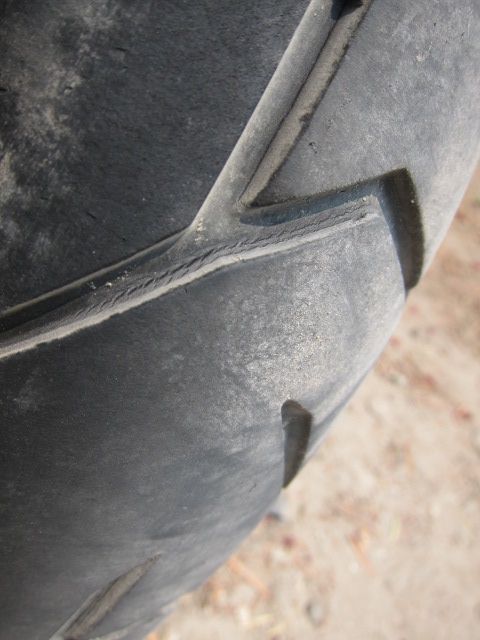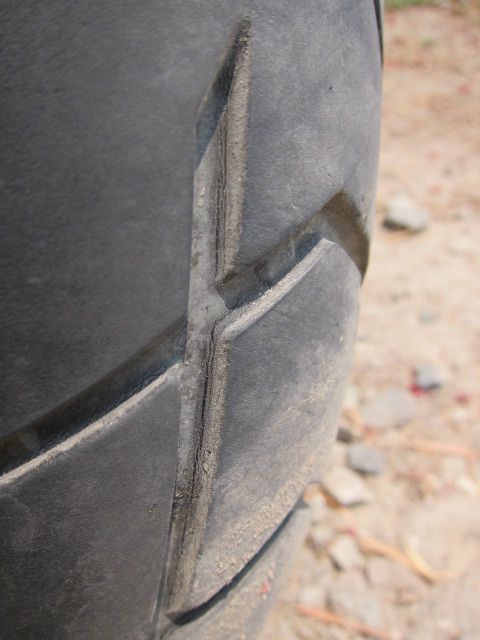| Author | Message | ||
Desert_bird |
2 months new. 40 PSI always. Less than maximum weight and ridden on good roads. Cracks on both front and rear tires. What gives?    | ||
Hughlysses |
Why 40 PSI? That's way over the recommended pressures in the owner's manual (34 F/ 36 R). | ||
Froggy |
The manual pressure is only for the original tires, not the trails. Also, many tires I've owned on my bikes have done that regardless of brand, I didn't think anything of it. | ||
Wooddog |
Check and see what the date of manufacture on the tire is. There should be a date code on the tire. Sometimes the tire may be on the shelf for a year or two before you buy it. | ||
Ourdee |
First thought here is you are over heating them. Running pressure may be higher. I was running higher than normal pressures on a recumbent lowracer at the Indianapolis 500 track when the heat on the sunny day popped the rear tire between turns 2 and 3. | ||
Desert_bird |
Hughlysses, I've always run near the top end of recommended pressure. That way I can get near 10K and high gas mileage. Stated max pressure for the Trail is 42 cold, so 40 cold is still within operating range for these. This time also running high because I have plenty of gear and my panniers on this road trip and to milk as much life as possible. (btw, godspeed on your engine work.) Not sure about auto's but I used to race road bikes and we'd age our sew up rubber road-tires before glueing them to the rims. That way they were harder and gave better feedback. (Lance Armstrong still has a stock of custom sew ups aged in his cellar in Texas. I think that he's liquidating them at some like $500 a piece!) Rubber is rubber. I'll check into that. Overheating them? If I were on a track perhaps, but I'm at normal speeds no well maintained roads. Guess I'll just let it go but keep a good eye out . . . . Ourdee, any talk of blowouts puts the serious freak in me. I'm knocking wood as I type. | ||
Union_man |
I would send an e-mail with those pictures to the manufacturer and ask them what is up with the cracks. As for pressures...I think that the pressure that is listed on the tires is what you should go by. | ||
Motorbike |
I would send an e-mail with those pictures to the manufacturer and ask them what is up with the cracks. +1 on that. It's worth a try. I had the same problem with the new Michelins I put on my Dodge Ram a few years ago. The dealer said it would not hurt a thing and just run it because Michelin will not warranty them. I guess I will avoid Michelins next time. | ||
Blasterd |
Looks like my 6 month old Shinko on the rear....... On a side note I have a 4 year old d616 on the front with no cracks on it. | ||
Arcticktm |
The pressure listed on a tire sidewall is the max pressure you should use on that tire. It is not a recommended pressure for a specific bike or rider, since Pirelli does not know how much your bike weighs, or how much you and your gear weigh. I always start with the owners manual pressure and adjust based on what I see or feel, unless the tire manufacturer has a recommended pressure for my specific bike. Some do and some don't. When I called Michelin after switching to Pilot Road 2's, they told me to use my owners manual tire pressure. I just put a Pirelli Trail on my front, so I guess I'll keep an eye on it. |